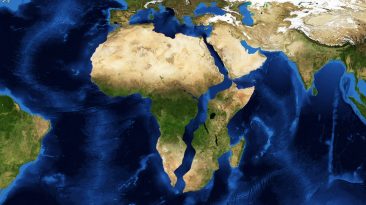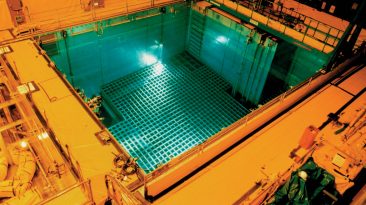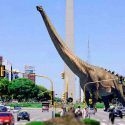Ready to have your mind blown? The Earth does not orbit the Sun… Technically speaking.
Everything in space, Sun included, orbits the center of mass of the solar system, also known as the barycenter. The reason why you were probably told the Earth orbits the Sun is because the Sun holds 99.87% of all the mass in the solar system, which is why the barycenter lies so close to the Sun, and why we… and Mercury, Venus, Mars, Jupiter – you get the point – appear to revolve around it.
But do you want to hear something truly revolutionary? What if we just said ‘no?’
What if the world finally stood up for itself and said, “I’m gonna do it my way!” Well in that case, the end is near…
If you already know why the Earth moves around the Sun, then you’re ahead of the curve. 1 in 4 Americans don’t know that the Earth orbits the Sun!
And if you’re just finding out now, then understand the gravity of this scenario. Objects with more mass influence those with less mass. So, the Earth is massive. Toss an object in the air, it comes back down, because the Earth pulls on it. And since the Sun is about 300,000 times bigger than Earth, it pulls on us.
But our planet, among others, likes to play hard to get. We move sideways. While the Sun tries to pull us closer, we keep pushing away. You might think that this situation calls for couples counselling, but believe me, this relationship works. If Earth stopped orbiting the Sun, you’d be dead in a month.
[dx_custom_adunit desktop_id=”RTK_CDE4″ mobile_id=”RTK_SUFd”]Sorry, was that too harsh? Well, gravity sucks. Literally, the Sun would just suck our world in.
Don’t worry, you’d get time to say your goodbyes, and to enjoy a stellar tan, but for anything else on your bucket list, better make it quick!
64 days after we stopped orbiting the Sun, we’d become a part of it. But we wouldn’t even have that long!
In just 21 days, the average temperature on Earth would jump to 35ºC (95ºF). That’s about double the average global temperature today. We could still handle it, but life would get really sticky and really smelly, really fast. And crops would start to fail too.
By day 35, our planet would have completed 20% of its journey to the Sun. The average temperature on Earth would hit 58ºC (137ºF), which means that if you’re not sitting in front of an air conditioner, it’s because you’re dead.
But even if you could afford the world’s greatest air conditioner – whatever that looks like – you’d only buy yourself a bit more time. Air conditioners consume a lot of power, and if everyone was running one on full-blast… Well, you can imagine how our power systems would start to fail.
When that happens, there’s not really much you could do. Most of the world’s animals and insects would be dead, forest fires would be raging everywhere, and the oceans would be about 10 days away from boiling.
The only creatures that could possibly live to this point would be tardigrades. These microscopic water bears are known for their survival skills. Capable of withstanding intense cold, intense heat, intense radiation, just, everything, okay? They’ve even survived for 10 days in outerspace!
But they wouldn’t last more than 54 days after Earth stopped orbiting the Sun. By that point, Earth’s temperature would reach over 160ºC (320ºF). Nothing survives.
Should I continue? Is there a point in counting down to doomsday if there’s no one left to cheer for or cry over?
You already know how it ends. By day 57, Earth is the closest planet to the Sun, by day 64, we’re in the Sun!
But look on the bright side, not only are you 6,000 times hotter, you’re far more enlightened! Just trying to make the best of a bad situation!
Subscribe to What-If on Youtube or follow the show on Facebook Watch.
Sources
- “If The Earth’S Orbit Stopped We Would Have About A Month To Contemplate Our Doom”. Fessenden, Marissa, Smithsonian. Accessed February 24 2019.
- “What Would Happen If The Earth Stopped In Its Orbit?”. Aatish Bhatia, 2019. WIRED. Accessed February 24 2019.
- “Technically, Earth Does Not Orbit Around The Sun | Realclearscience”. 2019. realclearscience.com. Accessed February 24 2019.
- “How Fast Is Earth Moving?“. Howell, Elizabeth. 2018. space.com. Accessed February 24 2019.
- “Global Surface Temperature | NASA Global Climate Change”. Change, NASA. 2018. Climate Change: Vital Signs Of The Planet. Accessed February 24 2019.
- “Earth’s Core Far Hotter Than Thought”. 2019. BBC News. Accessed February 24 2019.
- “Meet the tardigrade, the animal that will outlive us all”. 2019. Washington Post. Accessed February 24 2019.



























